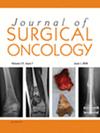Recurrence After Gallbladder Cancer Resection: Prognostic Impact of CA19-9 and CEA Levels at Baseline and During Surveillance
Abstract
Introduction
Baseline serum carbohydrate antigen (CA) 19-9 and carcinoembryonic antigen (CEA) levels may predict prognosis among patients undergoing resection for gallbladder cancer (GBC), yet the prognostic utility of the combination of the two markers has not been well established. In addition, the prognostic significance of elevated preoperative CA19-9 levels that normalize after GBC resection is currently unknown.
Methods
Patients undergoing resection of GBC between 2002 and 2021 were identified using an international, multi-institutional database. The association of preoperative CA19-9 and CEA levels with recurrence-free survival (RFS) following GBC resection was assessed. The negative predictive value (NPV) of normal vs. normalized (high preoperative/low postoperative levels) CA19-9 levels relative to the development of recurrence within 1 year after GBC resection was evaluated.
Results
Among 194 patients who underwent resection of GBC, median preoperative CA19-9 and CEA levels were 18.8 U/mL (IQR 7.0–88.0) and 2.2 ng/mL (IQR 1.3–3.8), respectively. A total of 92 (47.4%) and 67 (34.5%) patients had elevated CA19-9 (> 20 U/mL) and CEA (> 3 ng/mL) levels before GBC resection, respectively. Individuals with low CA19-9/low CEA had the most favorable 3-year RFS (74.5%) after GBC resection followed by individuals with either high CA19-9 (high CA19-9/low CEA: 41.6%) or high CEA (low CA19-9/high CEA: 60.9%) levels, whereas patients with high CA19-9/high CEA had the worst 3-year RFS (21.5%) following GBC resection (p < 0.001). Patients with normal preoperative CA19-9 levels had better 3-year RFS than patients with high preoperative CA19-9 levels that normalized after resection (74.6% vs. 51.4%, p = 0.03). While the NPV of normal preoperative CA19-9 levels relative to the development of recurrence within 1 year after GBC resection was 94.7%, the NPV of normalized CA19-9 decreased to 70% at 1-year post-resection.
Conclusion
Elevation of both preoperative CA19-9 and CEA levels portended poor prognosis following resection of GBC. Normalization of postoperative CA19-9 levels after GBC resection was still associated with elevated risk of recurrence. While preoperative tumor markers can accurately predict prognosis following resection for GBC, evaluation of traditional tumor markers may not be appropriate markers of occult recurrent disease in the postoperative setting. Better markers are needed to monitor for recurrence following resection of GBC.



 求助内容:
求助内容: 应助结果提醒方式:
应助结果提醒方式:


